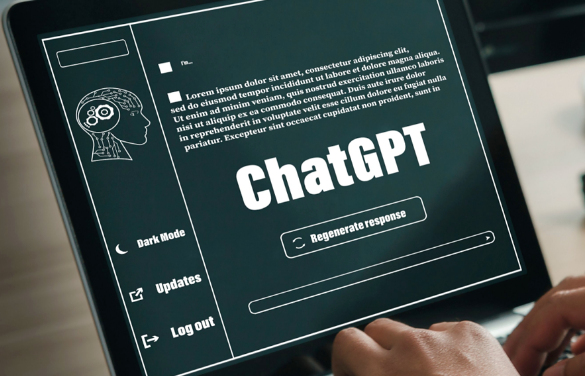 With ChatGPT able to write academic papers and even fool teachers, it may be easy to assume it spells the end of the copywriter and content creation as we know it. However, the consensus is that while tech’s latest watershed moment will certainly disrupt the marketing space, that is not to say it could ever truly replace the power of human creativity. Here, Sarah Groves, left, co-owner and director of Catalyst digital marketing agency tells you everything you need to know about the future of generative AI and marketing for the SME.
With ChatGPT able to write academic papers and even fool teachers, it may be easy to assume it spells the end of the copywriter and content creation as we know it. However, the consensus is that while tech’s latest watershed moment will certainly disrupt the marketing space, that is not to say it could ever truly replace the power of human creativity. Here, Sarah Groves, left, co-owner and director of Catalyst digital marketing agency tells you everything you need to know about the future of generative AI and marketing for the SME.
Generative Artificial Intelligence (AI) is, of course, nothing new. For years now, Large Language Models (LLMs) such as GPT-3 have been used that can produce and analyse vast amounts of language to produce human-like text for all types of business purposes.
It is only more recently though that the category has really come to the fore as Open-AI’s game changing ChatGPT hit the scene with its remarkable (though not entirely fault-free) ability to synthesise information into content which genuinely appears human-like. While previous prompt engineering limitations may have produced text that usually, with a little editing, could be suitable for use – ChatGPT, thanks to its 175 billion parameters – is able to generate text that is, perhaps, as close as it gets to the real deal.
With Pandora’s box firmly opened, the result has been ongoing furore as businesses look to the long-term implications and the most ethical and effective way possible to use this new tool. This becomes an even more pertinent consideration for SMEs looking for ways to cull costs and gain efficiencies amid ongoing economic turbulence.
But, as with all major innovation leaps, the reality is that there are number of pros and cons to consider when it comes to potentially joining the marketing automation bandwagon.
First of all, it’s important to consider what areas of your SME marketing needs require a limited skillset. For example, how much time does your marketing team spend proofreading copy for mail-outs, brochures, leaflets, reports or your website? How much time is spent translating content into multiple languages? Generally speaking, generative AI can provide a tremendous support in terms of taking on the regular and routine marketing functions, freeing up significant chunks of time for employees to utilise their skillset on more important strategic and creative focuses.
But its use isn’t limited to the basic either. As we all know, in this age of the digital-first consumer, it has never been more important for brands to create content which is unique, customer-centric, personal and relevant. AI can help here too. Whether its writing blogs, emails, product descriptions, ad copy, website copy and the like, the beauty of it is that a simple prompt – for example, ‘write a promotional email for 30% summer sale’ – can be used to provide a very basic draft. However, it would still need to be modified for audience, tone, brand messaging and in line with SEO requirements too.
Inherently too, it can prove a fantastic tool in providing a swift and effective response to customer enquiries 24/7 to ensure ‘always on’ customers service at all times – without the need to sleep or even take a bathroom break.
That said though, as robust and compelling as ChatGPT is, it’s not a true threat to human intellect. While it’s certainly an advanced technology, and still very much in the inaugural stages, the reality is that, just like any other computer, it does come with limitations.
Take, for example, one of the most important aspects of any marketing team – creativity. At a fundamental level, all AI tools have limited creativity because it relies on using massive amounts of prior data to learn – therefore any new output can only be generated by what inputs have been made. Put simply, this means that there is no way to truly think of novel ideas that don’t yet exist and therefore don’t have any data to learn from. Therefore, while it can be used to help stimulate and support the creative process, that’s not to say brands can simply ask ChatGPT to come up with their next big idea.
Taking the originality conundrum further, there is also the risk of oversaturation of the same content. Say, if all manufacturers use it to ‘write a blog on efficiencies in the manufacturing process’ without much personalisation, all blogs on this topic will be the same. Of course, blogs and other online articles are often used to help SEO, so it remains to be seen how brands will gain an organic visibility advantage over competitors using this method.
Also, although ChatGPT can generate human-like prose, it still lacks the emotional intelligence and empathy that a human would possess. This can be a significant limitation in customer service, where emotions and empathy play a vital role in resolving customer issues and building trust. The same too can be said of creative concepts which too often rely on an emotionally-charged connection between brand and consumer. Within this too, generative AI runs the risk of inherent bias and discrimination, meaning a certain level of human-intervention is always required.
Lastly, one of the biggest disadvantages of using generative AI is the potential for inaccuracies or misinformation. Since the outputs are trained through trial and error, they are only as accurate as the data and algorithms they are based on – as demonstrated by plenty of examples on social media of AI getting something factually wrong.
Despite all the headlines the reality is that nothing is perfect, not even ChatGPT. Ultimately, even despite its uncanny ability to produce human-like text, its scope for inaccuracies, bias, and an inherent lack of creativity and empathy means it could no way ever replace a human brain. Thus, to ensure it becomes more a friend than a foe for the SME will always require a delicate balance between automation and human intervention.


